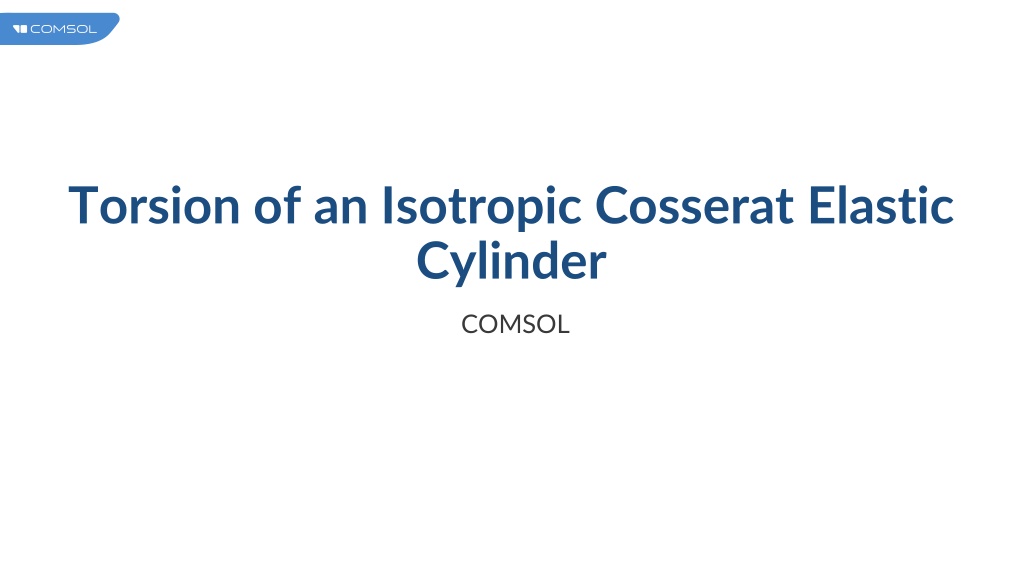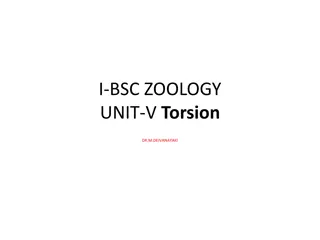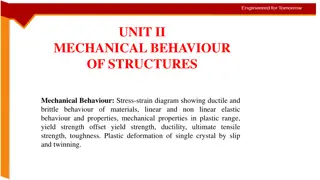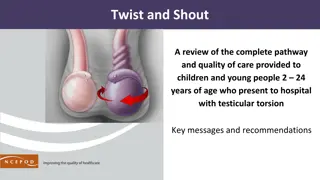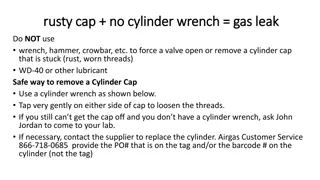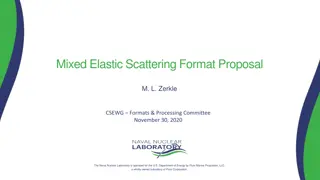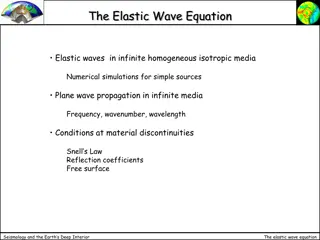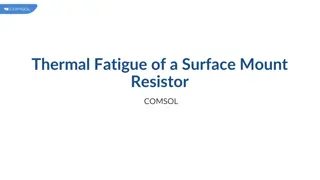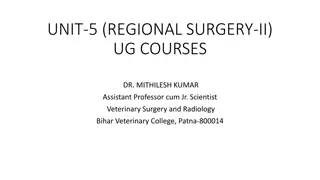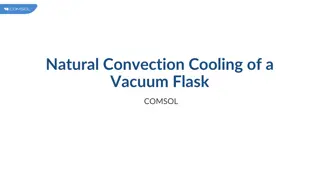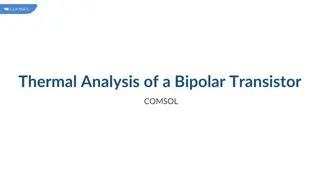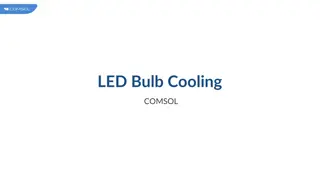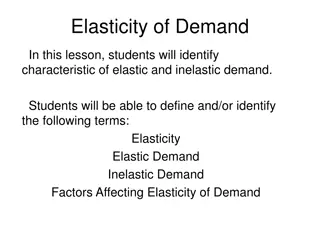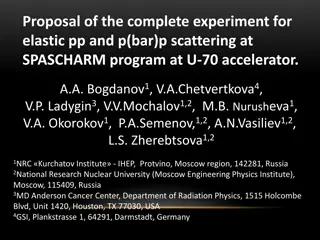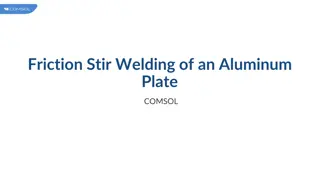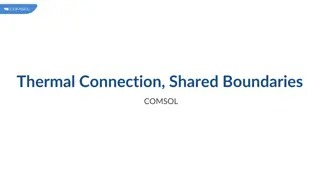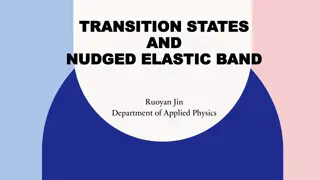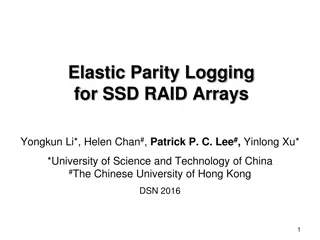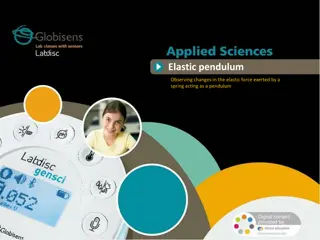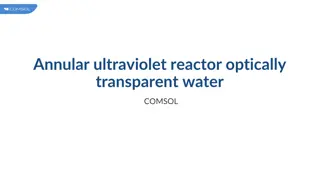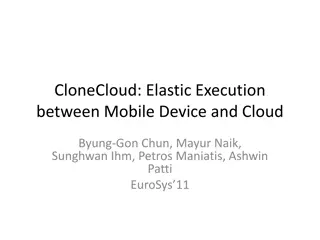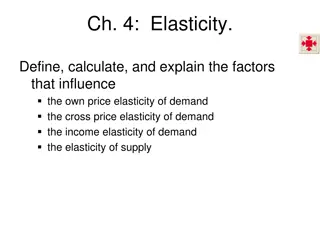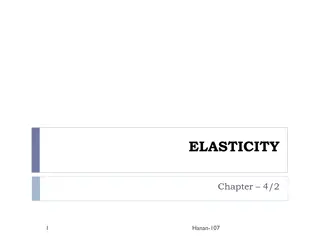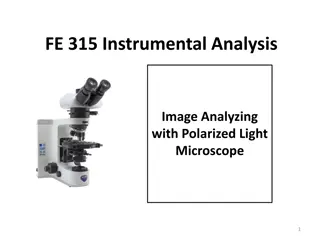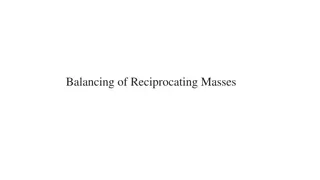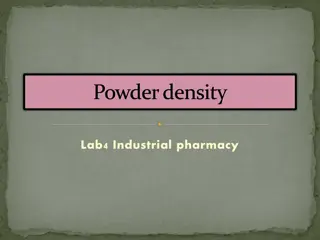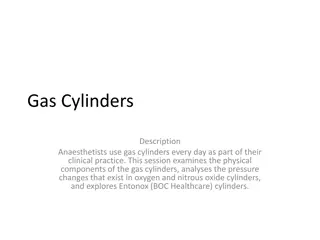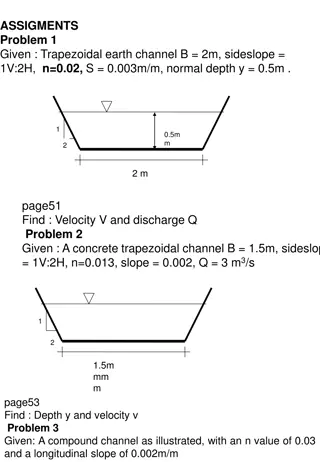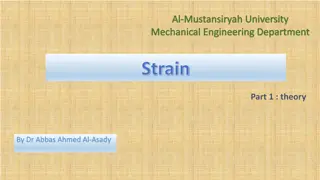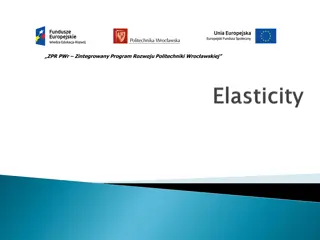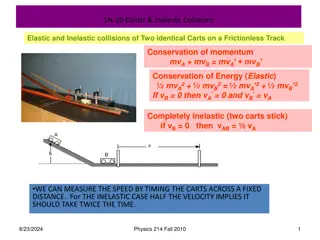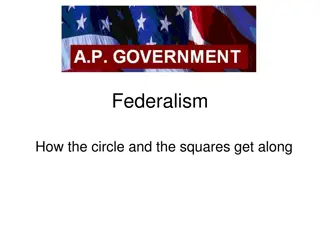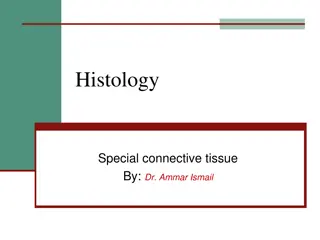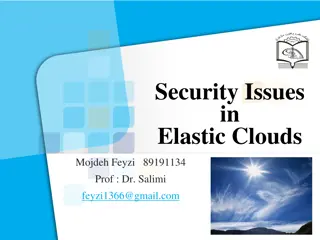Analysis of Torsion in Isotropic Cosserat Elastic Cylinder using COMSOL
Explore the extension of linear elastic material model to a Cosserat material, including microrotation degrees of freedom, with a focus on a cylindrical bar under pure torsion. Investigate the impact of Cosserat length scale parameter on the system response, analyzing different zones of behavior. Results indicate varying material stiffness and microrotation patterns based on Cosserat parameters.
Download Presentation

Please find below an Image/Link to download the presentation.
The content on the website is provided AS IS for your information and personal use only. It may not be sold, licensed, or shared on other websites without obtaining consent from the author. Download presentation by click this link. If you encounter any issues during the download, it is possible that the publisher has removed the file from their server.
E N D
Presentation Transcript
Torsion of an Isotropic Cosserat Elastic Cylinder COMSOL
Background and Motivation The Cosserat theory of elasticity incorporates, in addition to the displacement vector as in classical elasticity, the concept of local rotation (or local spin) in the continuum Each point has six degrees of freedom: three translations and three rotations (microrotations). This theory can be used to model microinhomogeneous materials, foams, masonries, bones, and so on
Objective Demonstrate how to extend the built-in linear elastic material model to a Cosserat material through the addition of microrotation degrees of freedom A cylindrical bar under pure torsion is analyzed and the effect of the Cosserat length scale parameter on the response is studied
Model Definition The displacements u and microrotations a are found solving the following system of equations:
Model Definition The corresponding weak form solved by the finite element method is Two additional parameters are introduced: Cosserat length scale LC Cosserat couple modulus C A Parametric Sweep in combination with an Auxiliary Sweep is used to evaluate the effect of these parameters
Results: Cosserat length effect Zone I (Lc/R0 < 0.10): No size effect and the material behaves as a linear elastic solid Zone II (0.1 < Lc/R0 < 100): There is a transition where the size effect on the solution is clearly visible. Zone III (Lc/R0 > 100): Cosserat effects dominate and the microrotation is nearly constant Reaction torque as a function of the Cosserate length parameter
Results: Cosserat couple modulus The bar becomes stiffer as the coupling C between the macro and micro rotations increases The effect is more visible for higher values of the Cosserat length Lc Reaction torque for different values of the Cosserate couple parameter
Results: macrorotation The bar becomes stiffer as the ratio between the parameter Lcand the cylinder s radius R0 increases. The bar twists only in the proximity of the constrained end Torsional deformation for different values of the Cosserat length
